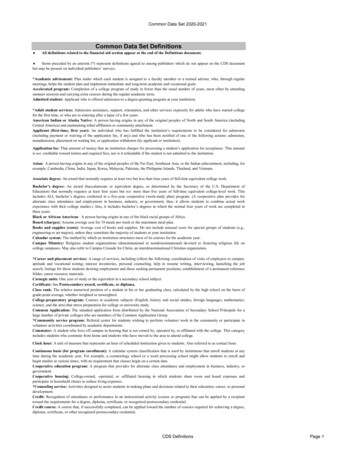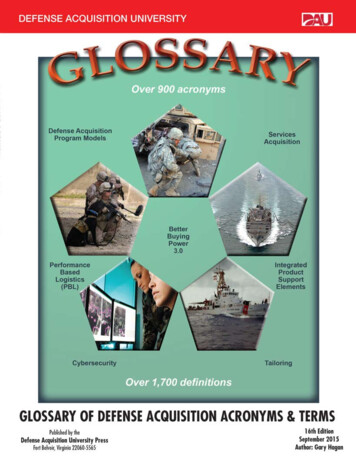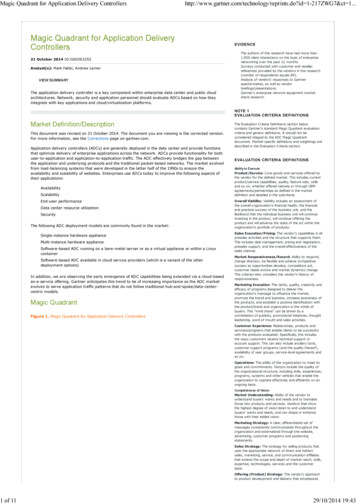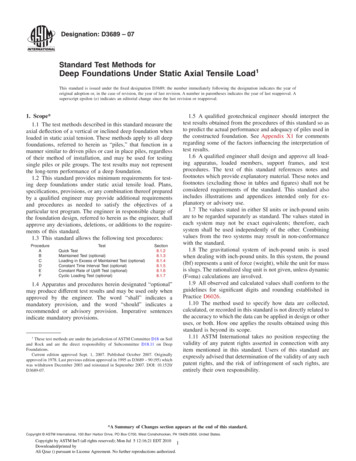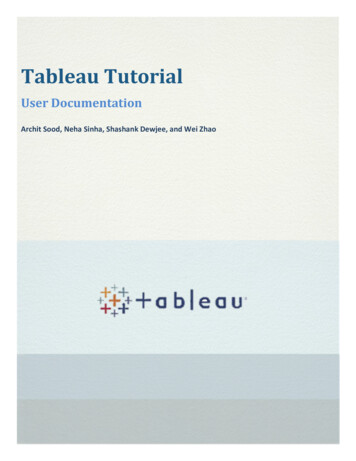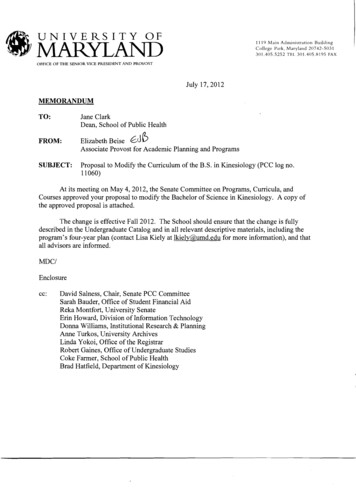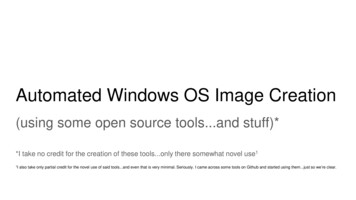
Transcription
Definitions: AI, ML, DSJordan Boyd-GraberUniversity of MarylandJANUARY 17, 2018Jordan Boyd-Graber UMDDefinitions: AI, ML, DS 1 / 20
Roadmap What is data science / artificial intelligence / machine learning? What is possible with these new tools and techniques? What are the challenges?Jordan Boyd-Graber UMDDefinitions: AI, ML, DS 2 / 20
Data provides the foundation
Machine learning provides algorithms
Artificial intelligence defines problems
Nowhere near true AI
Data are everywhere.Jordan Boyd-Graber UMDDefinitions: AI, ML, DS 7 / 20
TitleMPAAGenreURForeignJunebug (2005)RIndependentLa Cage aux Folles (1979)RComedyThe Life Aquatic with Steve Zissou (2004)RComedyLock, Stock and Two Smoking Barrels (1998)RAction &AdventureLost in Translation (2003)RDramaPGComedyPG-13ClassicsMemento (2000)RThrillersMidnight Cowboy (1969)RClassicsMulholland Drive (2001)RDramaIkiru (1952)Love and Death (1975)The Manchurian Candidate (1962)User ratingsNorth by Northwest (1959)NRClassicsStar Rating
PriceFinalPrice0.51 lb 7.99/lb 4.07Cheese0.5/0.51 lbCabot Vermont Cheddar1/1DairyFriendship Lowfat Cottage Cheese (16oz) 2.89/ea 2.891/1Nature's Yoke Grade A Jumbo Brown Eggs (1 dozen) 1.49/ea 1.491/1Santa Barbara Hot Salsa, Fresh (16oz) 2.69/ea 2.691/1Stonyfield Farm Organic Lowfat Plain Yogurt (32oz) 3.59/ea 3.593/3FruitAnjou Pears (Farm Fresh, Med)2/2Cantaloupe (Farm Fresh, Med)1.76 lb 2.49/lb 4.38 2.00/ea 4.00SGrocery1/1Fantastic World Foods Organic Whole Wheat Couscous(12oz) 1.99/ea 1.991/1Garden of Eatin' Blue Corn Chips (9oz) 2.49/ea 2.491/1Goya Low Sodium Chickpeas (15.5oz) 0.89/ea 0.892/2Marcal 2-Ply Paper Towels, 90ct (1ea) 1.09/ea 2.18 T1/1Muir Glen Organic Tomato Paste (6oz) 0.99/ea 0.991/1Starkist Solid White Albacore Tuna in Spring Water(6oz) 1.89/ea 1.89Vegetables & HerbsPurchases2
KnowledgeAkaike information criterion - Wikipedia, the free encyclopediahttp://en.wikipedia.org/wiki/Akaike information criterionCat - Wikipedia, the free encyclopediahttp://en.wikipedia.org/wiki/Cat Princeton University - Wikipedia, the free encyclopediaCatAkaike information criterion1 Definition2 AICc and AICu3 QAIC4 References5 See also6 External linksContents1 Physiology1.1 Size1.2 Skeleton1.3 Mouth1.4 Ears1.5 Legs1.6 Skin1.7 Senses1.8 Metabolism1.9 Genetics1.10 Feeding and diet1.10.1 Toxic sensitivity2 Behavior2.1 Sociability2.2 Cohabitation2.3 Fighting2.4 Play2.5 Hunting2.6 Reproduction2.7 Hygiene2.8 Scratching2.9 Fondness for heights3 Ecology3.1 Habitat3.2 Impact of hunting4 House cats4.1 Domestication4.2 Interaction with humans4.2.1 Allergens4.2.2 Trainability4.3 Indoor scratching4.3.1 Declawing4.4 Waste4.5 Domesticated varieties4.5.1 Coat patterns4.5.2 Body types5 Feral cats5.1 Environmental effects5.2 Ethical and humane concerns over feral cats6 Etymology and taxonomic history6.1 Scientific classification6.2 Nomenclature6.3 Etymology7 History and mythology7.1 Nine Lives8 See also9 References10 External links10.1 Anatomy10.2 Articles10.3 Veterinary relatedDefinitionIn the general case, the AIC iswhere k is the number of parameters in the statistical model, andL is the likelihood function.Over the remainder of this entry, it will be assumed that the model errors are normally and independentlydistributed. Let n be the number of observations and RSS bethe residual sum of squares. Then AIC becomesIncreasing the number of free parameters to be estimated improves the goodness of fit, regardless of thenumber of free parameters in the data generating process. Hence AIC not only rewards goodness of fit, butalso includes a penalty that is an increasing function of the number of estimated parameters. This penaltydiscourages overfitting. The preferred model is the one with the lowest AIC value. The AIC methodologyattempts to find the model that best explains the data with a minimum of free parameters. By contrast, moretraditional approaches to modeling start from a null hypothesis. The AIC penalizes free parameters lessJordan Boyd-Graber2/1/08 2:47 PM1 of 13 UMDhttp://en.wikipedia.org/wiki/Akaike information criterionAkaike information , -74.65931From Wikipedia, the free encyclopedia(Redirected from Princeton university)Cat[1]Princeton UniversityPrinceton University is a private coeducational research university located in Princeton, New Jersey. It is one of eightuniversities that belong to the Ivy League.Princeton has traditionally focused on undergraduate education and academic research, though in recent decades it hasincreased its focus on graduate education and offers a large number of professional master's degrees and doctoral programsin a range of subjects. The Princeton University Library holds over six million books. Among many others, areas ofresearch include anthropology, geophysics, entomology, and robotics, while the Forrestal Campus has special facilities forthe study of plasma physics and meteorology.other images of catsConservation statusDomesticatedScientific classificationKingdom: raFamily:FelidaeGenus:FelisSpecies:F. silvestrisSubspecies: F. s. catusContentsTrinomial nameFelis silvestris catus(Linnaeus, 1758)SynonymsFelis lybica invalid junior synonymFelis catus invalid junior synonym[ 2 ]1 History2 Campus2.1 Cannon Green2.2 Buildings2.2.1 McCarter Theater2.2.2 Art Museum2.2.3 University Chapel3 Organization4 Academics4.1 Rankings5 Student life and culture6 Athletics7 Old Nassau8 Notable alumni and faculty9 In fiction10 See also11 References12 External linksAkaike's information criterion, developed by Hirotsugu Akaike under the name of "an informationcriterion" (AIC) in 1971 and proposed in Akaike (1974), is a measure of the goodness of fit of anestimated statistical model. It is grounded in the concept of entropy. The AIC is an operational way oftrading off the complexity of an estimated model against how well the model fits the data.From Wikipedia, the free encyclopedia(Redirected from Dogs)The dog (Canis lupus familiaris) is a domesticated subspecies of the wolf, a mammal ofthe Canidae family of the order Carnivora. The term encompasses both feral and petvarieties and is also sometimes used to describe wild canids of other subspecies orspecies. The domestic dog has been (and continues to be) one of the most widely-keptworking and companion animals in human history, as well as being a food source insome cultures. There are estimated to be 400,000,000 dogs in the world.[1]Motto:Dei sub numine viget(Latin for "Under God's powershe S 15.8 billion[ 1 ]President:Shirley M. TilghmanStaff:1,103Undergraduates: 4,923[ 2 ]Postgraduates: 1,975LocationBorough of Princeton,Princeton Township,and West Windsor Township,New Jersey, USACampus:Suburban, 600 acres (2.4 km!)(Princeton Borough andTownship)Athletics:38 sports teamsColors:Orange and /www.princeton.edu)dogContents1 Definition2 AICc and AICu3 QAIC4 References5 See also6 External linksContents1 Etymology and taxonomy2 Origin and evolution2.1 Origins2.2 Ancestry and history of domestication2.3 Development of dog breeds2.3.1 Breed popularity3 Physical characteristics3.1 Differences from other canids3.2 Sight3.3 Hearing3.4 Smell3.5 Coat color3.6 Sprint metabolism4 Behavior and Intelligence4.1 Differences from other canids4.2 Intelligence4.2.1 Evaluation of a dog's intelligence4.3 Human relationships4.4 Dog communication4.5 Laughter in dogs5 Reproduction5.1 Differences from other canids5.2 Life cycle5.3 Spaying and neutering5.4 Overpopulation5.4.1 United States6 Working, utility and assistance dogs7 Show and sport (competition) dogs8 Dog health8.1 Morbidity (Illness)8.1.1 Diseases8.1.2 Parasites8.1.3 Common physical disordersHistoryThe history of Princeton goes back to its establishment by "New Light" Presbyterians, Princeton was originally intended to trainPresbyterian ministers. It opened at Elizabeth, New Jersey, under the presidency of Jonathan Dickinson as the College of New Jersey.Its second president was Aaron Burr, Sr.; the third was Jonathan Edwards. In 1756, the college moved to Princeton, New Jersey.Between the time of the move to Princeton in 1756 and the construction of Stanhope Hall in 1803, the college's sole building wasNassau Hall, named for William III of England of the House of Orange-Nassau. (A proposal was made to name it for the colonialGovernor, Jonathan Belcher, but he declined.) The college also got one of its colors, orange, from William III. During the AmericanRevolution, Princeton was occupied by both sides, and the college's buildings were heavily damaged. The Battle of Princeton, foughtin a nearby field in January of 1777, proved to be a decisive victory for General George Washington and his troops. Two ofPrinceton's leading citizens signed the United States Declaration of Independence, and during the summer of 1783, the ContinentalCongress met in Nassau Hall, making Princeton the country's capital for four months. The much-abused landmark survivedbombardment with cannonballs in the Revolutionary War when General Washington struggled to wrest the building from Britishcontrol, as well as later fires that left only its walls standing in 1802 and 1855. Rebuilt by Joseph Henry Latrobe, John Notman, andJohn Witherspoon, the modern Nassau Hall has been much revised and expanded from the original designed by Robert Smith. Overthe centuries, its role shifted from an all-purpose building, comprising office, dormitory, library, and classroom space, to classroomsonly, to its present role as the administrative center of the university. Originally, the sculptures in front of the building were lions, as agift in 1879. These were later replaced with tigers in 1911.[9]The Princeton Theological Seminary broke off from the college in 1812, since the Presbyterians wanted their ministers to have moretheological training, while the faculty and students would have been content with less. This reduced the student body and the externalsupport for Princeton for some time. The two institutions currently enjoy a close relationship based on common history and sharedDomesticFossil range: Late Pleistocene - RecentThe dog has developed into hundreds of varied breeds. Height measured to the withersranges from a few inches in the Chihuahua to a few feet in the Irish Wolfhound; colorvaries from white through grays (usually called blue) to black, and browns from light(tan) to dark ("red" or "chocolate") in a wide variation of patterns; and, coats can bevery short to many centimeters long, from coarse hair to something akin to wool,straight or curly, or smooth.Cats PortalSculpture by J. Massey Rhind(1892), Alexander Hall, PrincetonUniversityFrom Wikipedia, the free encyclopediaDogOriginally founded at Elizabeth, New Jersey, in 1746 as the College of New Jersey, it relocated to Princeton in 1756 andwas renamed “Princeton University” in 1896.[3] Princeton was the fourth institution of higher education in the U.S. toconduct classes.[4][5] Princeton has never had any official religious affiliation, rare among American universities of its age.At one time, it had close ties to the Presbyterian Church, but today it is nonsectarian and makes no religious demands onits students.[6][7] The university has ties with the Institute for Advanced Study, Princeton Theological Seminary and theWestminster Choir College of Rider University.[8]A skilled predator, the cat is known to hunt over 1,000 species for food. It is intelligent and can be trained to obey simplecommands. Individual cats have also been known to learn to manipulate simple mechanisms, such as doorknobs. Cats usea variety of vocalizations and types of body language for communication, including meowing, purring, hissing, growling,squeaking, chirping, clicking, and grunting.[4] Cats are popular pets and are also bred and shown as registered pedigreepets. This hobby is known as the "Cat Fancy".Until recently the cat was commonly believed to have been domesticated in ancient Egypt, where it was a cult animal.[5]But a study by the National Cancer Institute published in the journal Science says that all house cats are descended from agroup of self-domesticating desert wildcats Felis silvestris lybica circa 10,000 years ago, in the Near East. All wildcatsubspecies can interbreed, but domestic cats are all genetically contained within F. s. lybica.[6]Contents1 of 3Dog - Wikipedia, the free encyclopediaCoordinates:The Cat (Felis silvestris catus), also known as the Domestic Cat or House Cat to distinguish it from other felines, is asmall carnivorous species of crepuscular mammal that is often valued by humans for its companionship and its ability tohunt vermin. It has been associated with humans for at least 9,500 years.[3]Akaike information criterion - Wikipedia, the free encyclopediahttp://en.wikipedia.org/wiki/Princeton universityPrinceton UniversityFrom Wikipedia, the free encyclopediaFrom Wikipedia, the free encyclopediaAkaike's information criterion, developed by Hirotsugu Akaike under the name of "an informationcriterion" (AIC) in 1971 and proposed in Akaike (1974), is a measure of the goodness of fit of anestimated statistical model. It is grounded in the concept of entropy. The AIC is an operational way oftrading off the complexity of an estimated model against how well the model fits the data.1 of s:Species:In the general case, the AIC isCanisC. lupusSubspecies: C.l.TrinomialCanisDefinitionlupusfamiliariswhere k is the number of parameters in the statistical model, andL is the likelihood function.namefamiliarisOver the remainder of this entry, it will be assumed that the model errors are normally and independentlydistributed. Let n be the number of observations and RSS be(Linnaeus, 1758)Dogs Portalthe residual sum of squares. Then AIC becomesIncreasing the number of free parameters to be estimated improves the goodness of fit, regardless of thenumber of free parameters in the data generating process. Hence AIC not only rewards goodness of fit, butalso includes a penalty that is an increasing function of the number of estimated parameters. This penaltydiscourages overfitting. The preferred model is the one with the lowest AIC value. The AIC methodologyattempts to find the model that best explains the data with a minimum of free parameters. By contrast, moretraditional approaches to modeling start from a null hypothesis. The AIC penalizes free parameters less2/1/08 2:53 PMresources.PhysiologySize2/1/08 2:47 PM 1 of 82/1/08 2:46 PM1 of 32/1/08 2:47 PMDefinitions: AI, ML, DS 11 / 20
NeuroscienceJordan Boyd-Graber UMDDefinitions: AI, ML, DS 12 / 20
Social networksLink communities in US direct flight data detected by Online MMLC. Each segment is500 miles resulting in regional groups. Node sizes on top represent bridgeness, and on thenfluence.Jordan Boyd-Graber UMD4] is a Bayesian probabilistic model of network data. MMSB is a mixed membershipDefinitions: AI, ML, DS 13 / 20
FinanceJordan Boyd-Graber UMDDefinitions: AI, ML, DS 14 / 20
Data are input to algorithmsJordan Boyd-Graber UMDDefinitions: AI, ML, DS 15 / 20
We can recreate human decisionsJordan Boyd-Graber UMDDefinitions: AI, ML, DS 16 / 20
We can recreate human decisionsJordan Boyd-Graber UMDDefinitions: AI, ML, DS 16 / 20
Algorithms can solve tasksJordan Boyd-Graber UMDDefinitions: AI, ML, DS 17 / 20
Predictions: Technology changes but society doesn’t
Are we prepared for social changes?
Discussions of AI Need RealismJordan Boyd-Graber UMD You can’t solve a task withoutgood data Good data often requires humansDefinitions: AI, ML, DS 20 / 20
Discussions of AI Need RealismJordan Boyd-Graber UMD You can’t solve a task withoutgood data Good data often requires humans Unless task issuper-straightforward, also needML expertiseDefinitions: AI, ML, DS 20 / 20
Discussions of AI Need RealismJordan Boyd-Graber UMD You can’t solve a task withoutgood data Good data often requires humans Unless task issuper-straightforward, also needML expertise Effective solutions often requireinfrastructureDefinitions: AI, ML, DS 20 / 20
Discussions of AI Need Realism You can’t solve a task withoutgood data Good data often requires humans Unless task issuper-straightforward, also needML expertise Effective solutions often requireinfrastructure Jordan Boyd-Graber UMDExplanationsRetrainingSocio-technical interfacesDefinitions: AI, ML, DS 20 / 20
Discussions of AI Need Realism You can’t solve a task withoutgood data Good data often requires humans Unless task issuper-straightforward, also needML expertise Effective solutions often requireinfrastructure Jordan Boyd-Graber UMDExplanationsRetrainingSocio-technical interfacesDS/ML/AI is hard (but rewarding!)Definitions: AI, ML, DS 20 / 20
commands. Individual cats have also been known to learn to manipulate simple mechanisms, such as doorknobs. Cats use a variety of vocalizations and types body language for communication, including meowing, purring, hissing, growling, squeaking, chirping, clicking, and grunting.[4]Cats are
